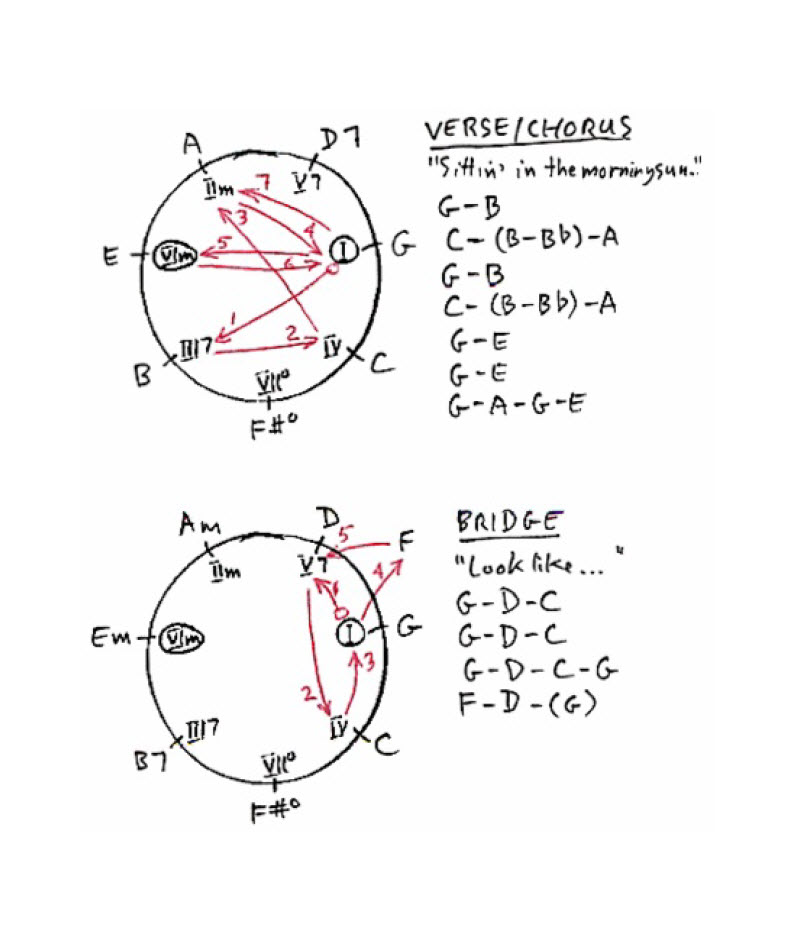You Are Reading the First 6 FREE Chapters (470 pages)
6.14.2 "Sittin' on the Dock of the Bay" Chords: How the Chord Progression Works
The chords to "Sittin' on the Dock of the Bay" (recorded by Otis Redding in the key of G major) are all simple major triads—no minor chords, no 7ths, characteristics is shares with the progression of “Free Man In Paris.” Also, both songs use chords that effectively convert the relative minor key into its parallel major.
As the chord map below reveals (Figure 114), the verse of “Sittin’ on the Dock of the Bay” has no fifth progressions, not even fifths to or from the tonic. Consequently, no conventional V – I or IV – I cadences.
The song modulates weirdly between the key of G major and the key of E major—which also has no conventional V – I or IV – I cadences.
Yet the modulation works because only major triads are used, and also because the progression returns to the tonic chord, G major, with sufficient regularity to establish the key of G major as the primary key.

FIGURE 114: Chord Map of “Sittin’ On The Dock Of The Bay” (Words and Music by Otis Redding and Steve Cropper, 1968)
In the bridge, the pattern changes to a standard, single-key I – V – IV progression. This reinforces G major as the song’s main key.
Near the end of the bridge, the progression reaches outside the harmonic scale and grabs the chromatic chord F major for one bar.

